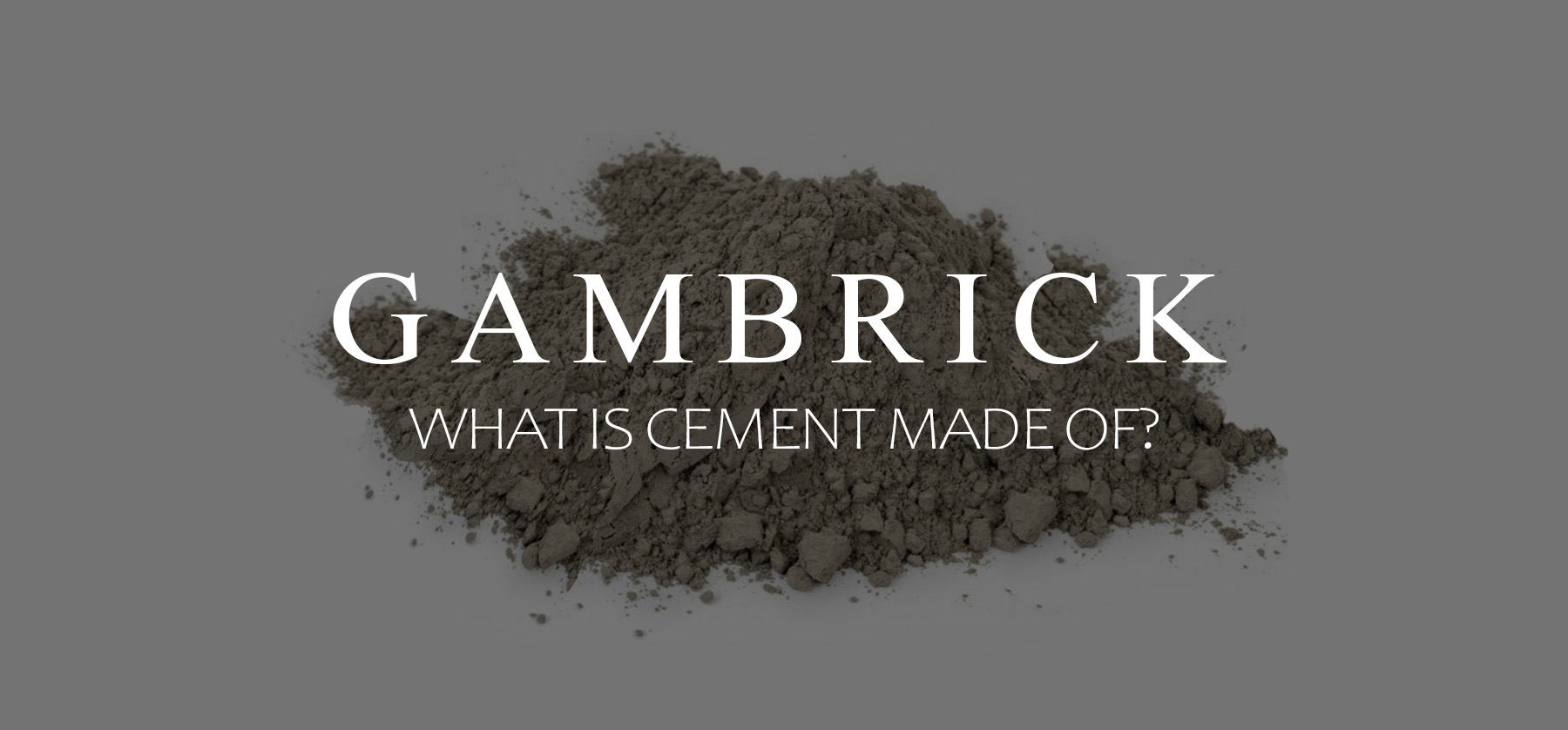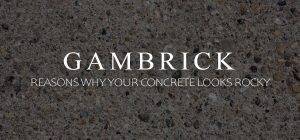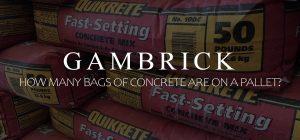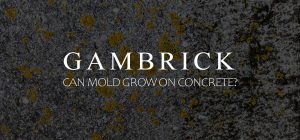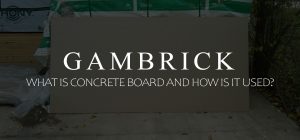What Is Cement Made Of?
Cement is the active ingredient used to make all sorts of masonry products like concrete, grout and mortar. But cement isn’t a natural material. It’s man made through the chemical combination of 8 main ingredients. What is cement made of? 60-65% Lime (calcium oxide or calcium hydroxide), 17-25% Silica (silicon dioxide), 3-8% Alumina (aluminium oxide), 1-3% Magnesia (magnesium oxide), 0.5-0.6% Iron oxide, 0.1-0.5% Calcium sulphate, 1-3% Sulfur trioxide, and 0-1% Alkaline. The ingredients are usually extracted from limestone, clay, marl, shale, chalk, sand, bauxite, and iron ore. These raw materials are crushed and ground into a fine powder at the cement plant. The powders are mixed together and fed into a kiln, heated to extremely high temperatures of around 2,700 degrees Fahrenheit and churned in huge cylindrical rotary kilns to keep them mixing while they’re hot.
As the powders move through the kiln, some elements are off-gassed while the remaining elements combine to create a new substance called clinker. Clinker is discharged from the kiln as red hot gray balls typically the size of marbles. The clinker is then tempered through a slow cooling process in a range of chambers.
Once cooled, the clinker is ground up and mixed with small amounts of gypsum or limestone to create cement powder.
The ingredients added to clinker impact the type of cement that’s created. For example, fly ash retards set time and makes it easier to work with in the heat.
Let’s recap what cement is made of: Lime, Silica, Alumina, Magnesa, Iron Oxide, Calcium Sulphate, Sulfur Trioxide and Alkaline. These ingredients are ground up, mixed together and baked to create clinker. Then the clinker is crushed and mixed with Gypsum or Limestone to create Cement.
Cement is then mixed with other ingredients to create grout, mortar, concrete and other masonry products.
How Cement Is Made
Cement is one of the most important building materials in the world. Just about everything built using masonry products also uses cement. Bricks are held together by cement grout. Stone is installed with mortar. Buildings, bridges and homes sit on foundation built with concrete. The active ingredient that makes all those things possible is cement.
Cement is a very unique material because it chemically reacts with water to form a paste that crystallizes and becomes extremely hard and strong. This process is called hydration. Hydration occurs during curing which typically takes 28 day to complete. For 28 days, cement dries, hardens and grows stronger as new crystals form.
On its own, cement is strong but cracks easily. It needs other ingredients to make it stronger.
Cement is a binding agent. Which means other materials can be added to it to change it’s properties and create new materials. For example, by adding aggregate stone and sand to cement you get concrete. Cement is the ingredient that reacts with water to become a paste, harden and cure. But its the sand and stone that gives it extremely high compressive strength.
Cement Is Made From Raw Materials
Making cement starts by gathering raw materials. Its made from 60-65% Lime (calcium oxide or calcium hydroxide), 17-25% Silica (silicon dioxide), 3-8% Alumina (aluminium oxide), 1-3% Magnesia (magnesium oxide), 0.5-0.6% Iron oxide, 0.1-0.5% Calcium sulphate, 1-3% Sulfur trioxide, and 0-1% Alkaline to form clinker.
When clinker is crushed into powder, gypsum or limestone is added to create cement.
All these ingredients have to be mined and brought together at a plant.
Extracting Raw Materials Crushing & Transportation
The most important raw materials for making cement are limestone, clay and marl. They are extracted from quarries by blasting or ripping using heavy machinery.
Wheel loaders and dump trucks transport the raw materials to huge crushing machinery. There the rock is broken down into small pieces.
Crushers are huge machines that can easily handle chunks of quarry rock as large as a barrel.
Raw limestone rock is crushed to reduce its size to about 6 inches. It is then fed into a second crusher and mixed with clay to reduce particle size below 3 inches. The raw mix is about 70% limestone and 30% clay. It’s then moved to a raw mill bin for further grinding.
Other raw materials that are used in cement manufacturing are stored in separate bins.These ingredients are called additives.
Raw Material Preparation I: Storage & Homogenization
The crushed material is transported into the raw material storage area of the cement plant by conveyor-belts, cable-ways, rail-ways or trucks. Once there it is stored in blending beds and homogenized.
Raw Material Preparation II: Drying & Raw Grinding
The mix of raw crushed material and additional components required for the type of cement being produced, e.g. silica sand and iron ore, is prepared using metering devices.
Roller grinding mills and ball mills grind the mixture into a fine powder at the same time its dried. It is then moved to raw material silos for further homogenization.
Burning
The raw mill contains two large chambers. A drying chamber and a grinding chamber. Hot gases coming from a kiln system enters the mill and dries the raw mix materials before it enters the next chamber, which is the grinding chamber.
The grinding chamber contains ball charges in different sizes ranging from 30mm to 90mm that are used to grind the material. Once grinding is complete, it feeds to a separator which separates the fine and coarse material.
Coarse material, called reject, is sent to the mill inlet for regrinding.
Then, hot gas and fine materials enter a multistage “cyclone”. This separates fine ground material from its gases. The resulting very fine raw material is conveyed to a silo.
From there the raw material, now called kiln feed, is fed to the top of the kiln for sintering.
Raw materials are cooked and turned in a kiln at approx. 1,450°C. By chemical conversion, a process known as sintering, a new product is formed called clinker.
Clinker is a combination of all the raw materials baked in the kiln. Its small, gray and round and looks similar to a rock.
Sintering
The kiln system consists of a multi-stage cyclone heater, combustion chamber, riser duct, rotary kiln, and grate cooler.
In the heater, the kiln feed is heated by hot gas coming from the combustion chamber and rotary kiln. It’s then partially calcined in a combustion chamber and riser duct. The material then moves into the rotary kiln where it is super-heated to approximately 1450 C to form clinker through a process called sintering.
Heat is produced by burning fuel in the main burner rotary kiln and in the combustion chamber. Coal, natural gas, fuel oil, and petroleum are all forms of fuel used to power kilns.
Sintering occurs when the chemical bonds of raw material are broken down through intense heat, recombining into new compounds that form a substance called clinker.
Clinker comes out of the kiln as extremely hot, small, dark gray rocks approximately 1mm to 25mm in size.
It drops onto a grate cooler where it cools down from approximately 1350-1450 C to approximately 120 C aided by the use of cooling fans.
Once the clinker cools, it is transported to silos where it is stored until it’s ready for grinding.
Cement Grinding
After burning, clinker is cooled down and stored inside silos. From there the clinker is moved to ball mills or roller presses where it’s ground down to a very fine powder.
More ingredients are then dded to the powder such as gypsum and anhydrite to create cement. Other additives can also be used to alter the cement’s properties based on how it will be used. For example, Gypsum is added to make OPC, limestone for limestone cement, and slag for slag cement.
The fine powder is sent to a separator which separates fine and coarse product. Coarse material is sent to back to the mill for regrinding.
The final product is stored in silos as cement.
Cement powder is so fine that 1 pound of cement can contain 150 billion grains.
Quality Control
Quality is very important because cement is used to make so many important construction materials like mortar, thinset, grout and concrete. The whole production process is monitored and controlled from a central control room where data from the plant and laboratory come together. Highly qualified production controllers operate and safeguard the plant.
Cement plant laboratories check each step by frequent chemical and physical tests. The labs also analyze and test the finished product to ensure that it complies with all industry specifications and standards.
Shipping
The finished cement is stored in separate silos, depending on its type and strength class. From there it’s mainly loaded in bulk form from terminals onto rail or road vehicles as well as onto ships.
Only a small proportion of the cement reaches customers in bagged form. Bags of cement are filled by rotary packers and stacked on pallets for delivery to retail stores.
Most of the finished cement is transported to companies where it is mixed again with more materials to create new products. For example, concrete companies mix cement with stone and sand to create dry concrete.
Concrete vs Cement: What’s The Difference?
People often use the terms cement and concrete interchangeably. But they’re not the same thing.
Concrete is an end product which contains cement, stone and sand.
Cement is an active ingredient of concrete that binds the sand and stone together. This is what gives concrete it’s great compressive strength. Cement is actually the active ingredient used to make lots of masonry products like grout, thinset and mortar.
The basic formula to make concrete is 65-75% sand and stone, 10-15% cement and 15-20% water. When the dry ingredients are mixed with water, the cement activates to create a paste that hardens and grows extremely strong and dense over time. Dry concrete has very high compressive strength and becomes hard like a rock.
Cement + Aggregates + Water = Concrete.
The strong, durable, structural building material that’s used all over the wold to build homes, buildings, sidewalks, roads, damns, etc. is concrete, not cement. But cement is the main binding ingredient that makes concrete possible. Without cement, the sand and stone aggregate would crumble apart under even small weight loads.
What Is Portland Cement Made Of?
Portland cement is a brand name, but it’s no different than any other type of cement. It’s the main active ingredient found in products such as concrete, mortar, thinset and grout.
Think of cement as an ingredient and concrete as and end product. It’s similar to baking a cake. The main ingredient in cake is flour because it binds the other ingredients like sugar and chocolate together. Water activates the flour and turns it into a paste that’s mixed together with your other ingredients. Making concrete is pretty much the same thing. Concrete is the cake, cement is the flour, stone and sand are the chocolate and sugar.
Portland cement is made of 60-65% Lime (calcium oxide or calcium hydroxide), 17-25% Silica (silicon dioxide), 3-8% Alumina (aluminium oxide), 1-3% Magnesia (magnesium oxide), 0.5-0.6% Iron oxide, 0.1-0.5% Calcium sulphate, 1-3% Sulfur trioxide, and 0-1% Alkaline. These ingredients are ground up, mixed together and baked to create clinker. The clinker is then crushed and mixed with Gypsum or Limestone to create fine powder.
Common raw materials used to make the powder include limestone, shells, and chalk or marl combined with shale, clay, slate, blast furnace slag, silica sand, and iron ore. These ingredients, when heated at high temperatures form a rock-like substance called clinker that is ground into the fine powder that we call cement.
Bricklayer Joseph Aspdin of Leeds, England first made Portland cement early in the 19th century by burning powdered limestone and clay in his kitchen stove. Now the product is used to make millions of tons of masonry products all over the world.
Can You Make Cement Yourself?
Cement is a dry powder that makes products like concrete, mortar and grout. Instead of buying it bagged, you can make your own natural cement by burning limestone.
From there, you can add sand and stone to make homemade concrete.
Gather Limestone. You can buy things that contain limestone or gather it in nature. You can usually buy it at landscaping supply stores, plant nurseries or garden centers. Or you can find it yourself. A great sources of limestone are seashells.
- A great way to test if a rock is limestone is to scratch it. Limestone is soft and can be scored by something as soft as the edge of a coin.
Break Limestone Into Small Pieces. Make the pieces as small as possible. The smaller you can break up the chunks, the less time you’ll have to heat them.
- Try to break the limestone into pieces no larger than 2 inches across. Like small marbles.
Cook The Limestone In A Kiln. Place the limestone chunks it in a kiln. Make the kiln as hot as possible. Over 900 °C (1,650 °F) works best. Let the limestone bake for 4 or 5 hours.
- Wear safety gear when working with a kiln and temperatures this hot.
Let The Limestone Cool. After 4 or 5 of baking, pull the limestone out and let it cool. Don’t breathe in baked limestone fumes because they are caustic and can damage your lungs.
- Baked limestone is called quicklime.
- Quicklime is harmful to the body and can harm your lungs. I recommend wearing safety gear.
Crush The Limestone. Baked limestone should have a dry, crumbly consistency. Crush the cooled limestone into a fine powder. The resulting powder is cement, which you can mix with water, sand, and stone to make concrete.
Summary: What Is Cement Made Of?
Cement is the active ingredient used to make all sorts of masonry products like concrete, grout and mortar. But it isn’t a natural material. It’s man made through the chemical combination of 8 main ingredients. What is cement made out of? 60-65% Lime (calcium oxide or calcium hydroxide), 17-25% Silica (silicon dioxide), 3-8% Alumina (aluminium oxide), 1-3% Magnesia (magnesium oxide), 0.5-0.6% Iron oxide, 0.1-0.5% Calcium sulphate, 1-3% Sulfur trioxide, and 0-1% Alkaline. The ingredients are usually extracted from limestone, clay, marl, shale, chalk, sand, bauxite, and iron ore. These raw materials are crushed and ground into a fine powder at a plant. The powders are mixed together and fed into a kiln, heated to extremely high temperatures of around 2,700 degrees Fahrenheit and churned in huge cylindrical rotary kilns to keep them mixing while they’re hot.
As the powders move through the kiln, some elements are off-gassed while the remaining elements combine to create a new substance called clinker. Clinker is discharged from the kiln as red hot gray balls typically the size of marbles. The clinker is then tempered through a slow cooling process in a range of chambers.
Once cooled, the clinker is ground up and mixed with small amounts of gypsum or limestone to create fine powder.
The ingredients added to clinker impact the type of product that’s created. For example, fly ash retards set time and makes it easier to work with in the heat.
The ingredients are: Lime, Silica, Alumina, Magnesa, Iron Oxide, Calcium Sulphate, Sulfur Trioxide and Alkaline. These ingredients are ground up, mixed together and baked to create clinker. Then the clinker is crushed and mixed with Gypsum or Limestone to create powder.
If you have any questions or comments about cement, email any time.
